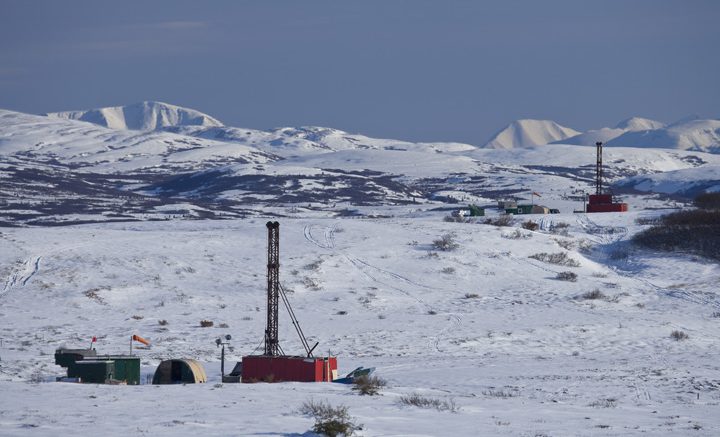Northern Dynasty Minerals’ (TSX: NDM; NYSE: NAK) contentious Pebble project in southwest Alaska is on the rocks again after the Environmental Protection Agency denied environmental approvals.
The EPA on Tuesday ruled the gold, copper and molybdenum project, which has been on-again off-again for decades, can’t deposit waste material within the local watershed to safeguard the world’s largest sockeye salmon fishery at Bristol Bay, 380 km southwest of Anchorage.
The decision effectively cancels the project, and any other future development in the watershed, although Northern Dynasty said it would probably appeal to federal court.
“This preemptive action against Pebble is not supported legally, technically, or environmentally,” John Shively, the project’s chief executive officer, said in an emailed statement. “As such, the next step will likely be to take legal action to fight this injustice.”
The Pebble deposit was discovered in the late 1980s by what now is Teck Resources (TSX: TECK; NYSE: TECK) and advanced by Northern Dynasty since 2001 through stages of studies, permits and appeals. It would be the North America’s largest mine with a 600-metre-deep pit and a potential US$1 billion in revenue.
But it’s knocking up against a US$2.2-billion-a-year salmon fishery and Biden administration calls for increased wilderness conservation and respect for tribal rights. Just last week it protected the Tongass National Forest in Alaska and the Boundary Waters Area Watershed in Minnesota, blocking the Antofagasta (LSE: ANTO) Twin Metals project there. A decision on 1,800 sq. km of native lands in Nevada is expected within days.
“The Bristol Bay watershed is a vital economic driver, providing jobs, sustenance, and significant ecological and cultural value to the region,” EPA administrator Michael Regan said in a news release. “With this action, EPA is advancing its commitment to help protect this one-of-a-kind ecosystem, safeguard an essential Alaskan industry and preserve the way of life for more than two dozen Alaska native villages.”
Ups and downs
Pebble has won a legal challenge against the EPA before, during the tenure of former president Barack Obama. Development appeared to be going ahead during his successor Donald Trump’s time in office, when the EPA dumped proposed restrictions, although the same government later denied the mine’s permit. Then Biden singled out Bristol Bay even during his campaign for the White House, calling it “no place for a mine.”
CEO Shively said the administration’s stance lacks consistency when it’s trying to promote battery metals and other minerals needed for clean technology but won’t end dependence on foreign suppliers.
“When we go to China seeking the copper and other minerals we need for our green energy transition, the reaction will likely be more problematic and the cost more expensive,” Shively said.
Alaska’s Governor, Republican Mike Dunleavy, also criticized the EPA decision.
“EPA’s veto sets a dangerous precedent,” Dunleavy said in a news release. “Alarmingly, it lays the foundation to stop any development project, mining or non-mining, in any area of Alaska with wetlands and fishbearing streams.”
Pebble has measured and indicated resources of 6.5 billion tonnes grading 0.4% copper, 0.34 gram gold per tonne, 240 parts per million (ppm) molybdenum, 1.7 grams silver per tonne and 0.41 ppm rhenium, for 57 billion lb. of copper, 70.6 million oz. gold, 3.4 billion lb. molybdenum and 345 million oz. of silver.
Shares in Northern Dynasty fell by nearly 11% on Tuesday to close at 28¢ each, touching a 52-week low and valuing the company at $152 million. They’ve traded as high as 65¢ in the past 12 months.


The US EPA has “ruled” (in its own words) that Northern Dynasty “can’t deposit waste material within the local watershed “. That sounds quite reasonable. Then permit Northern Dynasty to either treat the waste material in a plant designed to exit water into the local watershed – in lieu of so-called ‘waste material’ OR have the ‘waste material’ enter the natural environment ( on Northen Dynasty land ) via a porous drainage channel system with the surrounding land becoming saturated with ‘waste material’ thus converting said adjoining land into a polishing pond where the organics and roots of the surrounding land will simply clean the waste of suspended solids, thus converting ‘waste material’ into water, and with said water released into the channel upon superation at spring snow melt. Look for a solution and don’t take the position of the negative thinkers